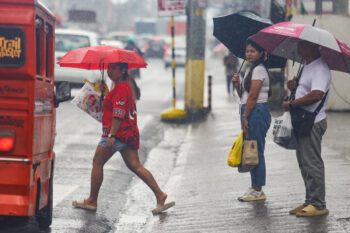GENERAL SANTOS CITY (MindaNews/05 March) — In a bid to ease the daily rotational brownouts here, city officials are pushing for the use of the leased diesel-fired modular generator sets of distribution utility South Cotabato II Electric Cooperative (Socoteco II) despite the lack of official approval from the Energy Regulatory Commission (ERC).
City Mayor Ronnel Rivera said he had met with officials of Socoteco II earlier this week to discuss the possible operationalization of the 15-megawatt (MW) modular generator sets to further reduce the rotational brownouts lasting two hours and 30 minutes being implemented by the electric cooperative.
He said Socoteco II general manager Rodolfo Ocat initially agreed to the local government’s proposal even without an approved power sales agreement (PSA) from the ERC.
The ERC conducted a public hearing on October 30 last year for the application filed by Socoteco II on August 28 for the approval of the PSA “with prayer for provisional authority.”
The application pertains to the PSA executed between Socoteco II and SoEnergy Philippines Inc. on May 28, 2013 that was amended on July 23.
ERC has yet to issue a decision regarding the two-year deal, which details the rates that will be imposed on local power consumers for the use of the generator sets.
“Socoteco II will subsidize whatever will be difference between the applied rates and those that will be approved by the ERC,” Rivera said in an interview over TV Patrol Socsksargen.
Under the PSA, SoEnergy Philippines will “make available, reserve, guarantee and deliver” 15 MW of power at full capacity to the electric cooperative.
SoEnergy earlier established a power plant composed of Caterpillar brand modular generators and other necessary facilities in a lot owned by Socoteco in Purok Lanton, Barangay Apopong here.
Based on Socoteco II’s projections, an additional 52 centavos per kilowatt-hour (kwh) will be added to the area’s basic power rates if the generator sets will be used for six hours daily and P1.22 per kwh for 12 hours.
A capacity fee of 22 centavos per kwh will be charged to local power consumers while the generator units are on standby.
Aside from the operationalization of the generator sets, Rivera said the local government is also coordinating with others sectors in the city to determine possible measures to help ease the rotational brownouts and its impact on the local economy.
He said they are specifically looking at tapping other alternative power sources to ensure stable power supplies in the area, especially during the coming summer season.
The rotational brownouts in the city and other areas served by Socoteco II reached as high as seven hours last year due to the reduction of power supplies coming from the hydroelectric plants of the National Power Corporation in Bukidnon and Lanao provinces.
The power supply shortage was blamed on the declining water levels along Lake Lanao and the Pulangi River, where the hydroelectric plants are located.
Owing to this, the mayor said urged local residents to make the necessary preparations in case the rotational brownouts would eventually worsen.
“We should prepare for it as early as now so we will not be surprised by it later on,” Rivera said. (MindaNews)
